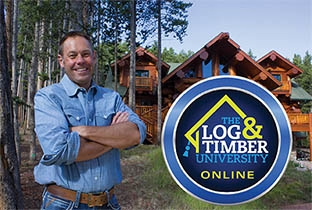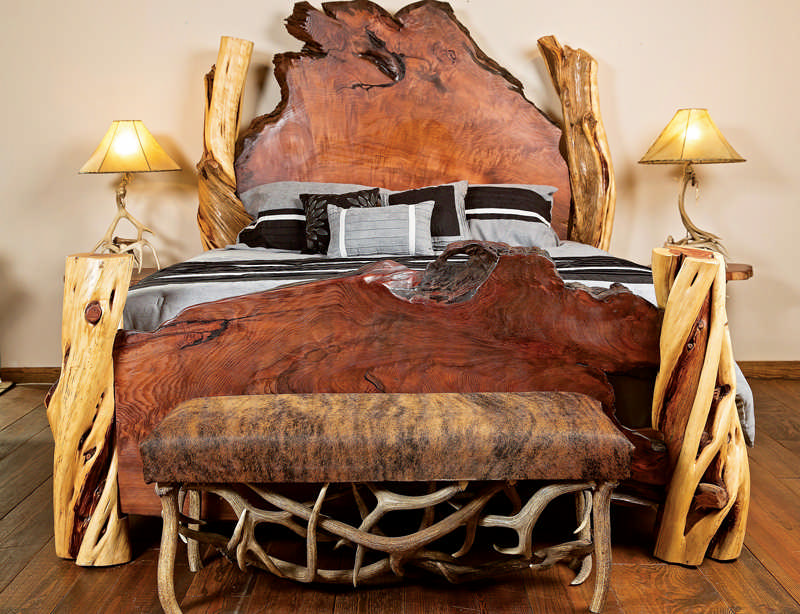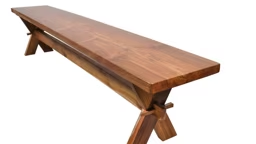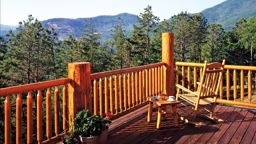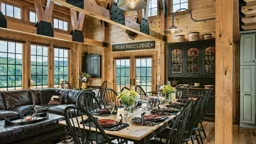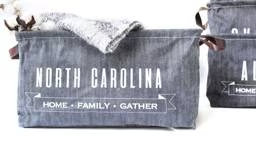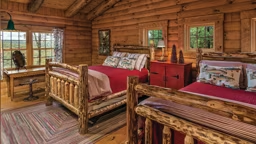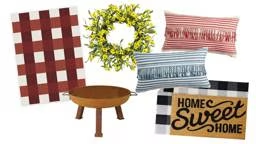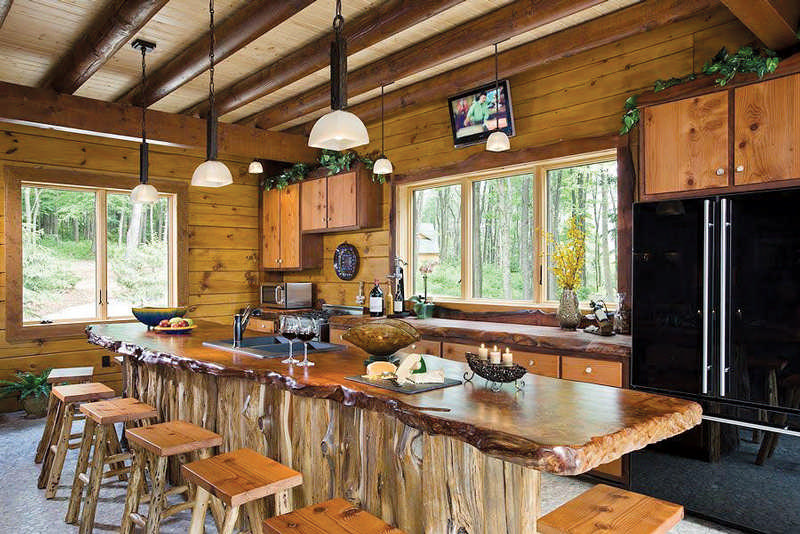 Kelly crafted this massive countertop from salvaged old-growth redwood.
Kelly crafted this massive countertop from salvaged old-growth redwood.
When a furniture-maker has as much artistic talent as Kelly Maxwell, you’d naturally assume he’s been working with wood all his life, starting as a hobby when he was a boy and then honing his craft through his teens and into adulthood. But you’d be mistaken.
“I grew up farming most of my life. Then I became a paramedic. Woodworking didn’t come until much later. At first, I couldn’t cut a straight line or pound a nail straight. It’s something I learned as I went along,” he says.
“Much later” came when his daughter was about to get married, and his wife asked if he could build some furniture for the ceremony.
“I said, ‘Sure,’ even though I didn’t have a clue what I was doing.”
To look at his masterfully built beds, vanities, dining tables and countertops now, you’d never know he was 100-percent self-taught.
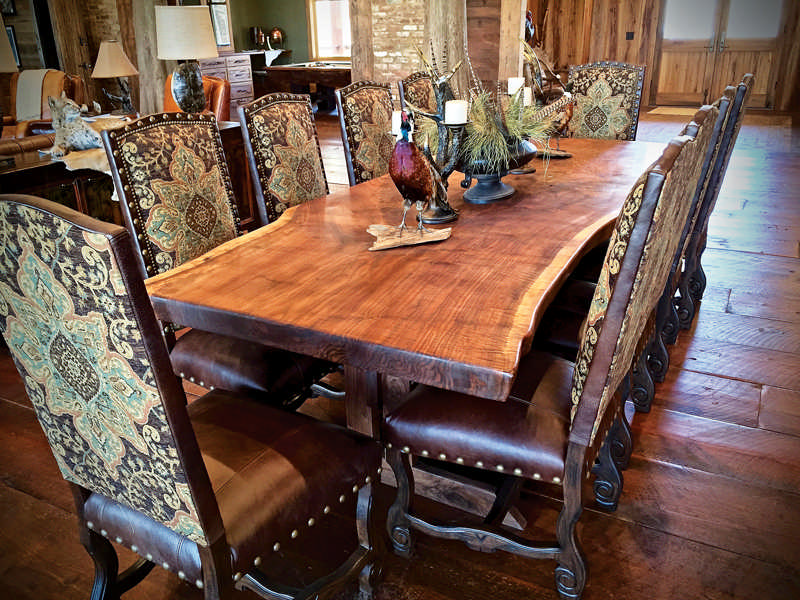 Extensive sanding and natural tung-oil give Kelly’s pieces their luster.
Extensive sanding and natural tung-oil give Kelly’s pieces their luster.
“It’s been a total transformation. First, I started harvesting my own cedar logs. Then I started bringing in redwood slabs, claro walnut, big-leaf maple and western juniper,” Kelly says. “I really enjoy working with the claro walnut and the highly figured redwoods. It’s like peeling back an onion. When I’m looking at the raw wood, I can get an idea of what it will be, but what I actually find, especially when I get it peeled back and get the finish on it, is a surprise each time. There’s a lot of satisfaction in it.”
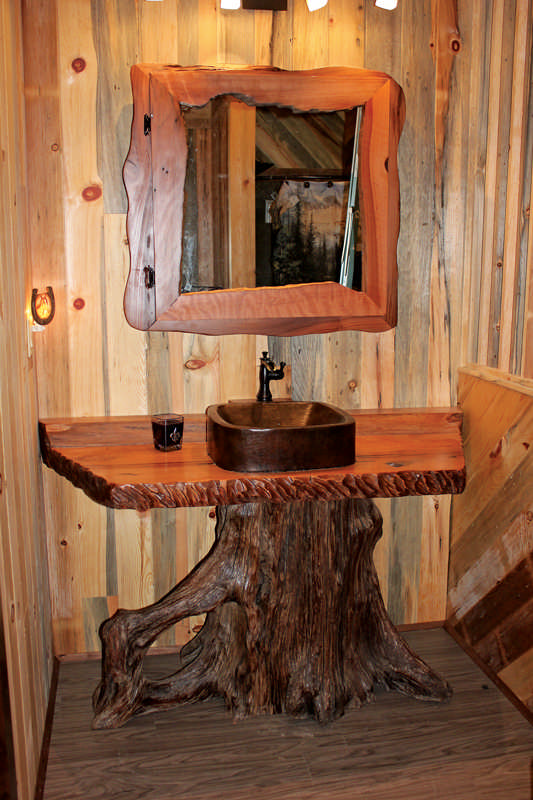 A hollowed-out tree root makes a one-of-a-kind vanity pedestal.
A hollowed-out tree root makes a one-of-a-kind vanity pedestal.
Though walnut and redwood may be his species of choice now, the first bed he ever made was from standing-dead dogwood.
“I typically try to use trees that are already dead, whether it’s dead-standing or on the forest floor,” Kelly explains. “But all my wood is native to the United States, almost exclusively from the West Coast — highly figured redwood, big-leaf maple and black walnut. I also use some reclaimed barnwood. For me, the wood has to have character.”
Kelly’s studio, Littlebranch Farm, in downtown Nashville, Tennessee, boasts 11,000 square of space that includes a 3,000-square-foot showroom, with the rest dedicated to his workshop and warehouse — more than enough space to house the massive pieces of raw material he’s known for.
“I specialize in whole slabs. There’s a big movement to produce pieces that have a ‘live edge’ or are made to look like large slabs, but often they aren’t solid; they’re actually a lot of smaller pieces of wood glued together. I have 750 slabs in stock right now, from basic small-burl to 20-foot-long, 5-foot-wide slabs that are one solid piece of wood.”
Kelly’s process is simple and straightforward.
Take creating a bed, for example: “First I choose all the components that will give the bed symmetry. I don’t want it to be heavy on side and light on the other. I want to bring balance to it as much as possible while keeping it natural. Say it’s going to be a juniper and redwood bed, I’ll pick out the headboard posts and based on what the posts are, then I’ll select my center slab that will give me the height that I want, then I choose the footboard. Sometimes the footboard makes a strong statement, but usually it’s a fade-away so that the focus stays on the headboard,” he says.
“For vanities, I’ll pull a root and start walking around it so I can determine what size slab I want to use as the top. I will start shaping it out, sand it and then carve the back of the stump so the plumbing can run through. Finally, I’ll carve the sink into the top.”
Kelly never stains his furniture. The colors you see are the exquisite tones of the wood that he brings to life through his finishing techniques.
“In my shop, we do a lot of sanding. I’ll take my wood surfaces down to an extremely fine sandpaper —anywhere from 400-1600 grit. It takes a lot of time, but it’s worth it,” he states.
This meticulous process is what gives Kelly’s pieces their satiny-smooth texture and rich, natural color.
“To finish them off, I use a hand-rubbed tung-oil blend that’s low-VOC. Once it’s totally cured, it’s 100-percent non-toxic. The beauty is down inside, but when you sand it and apply the finish, what’s hidden starts to pop.”
To properly commission a piece, there are a few things Kelly needs to know, starting with the size of the space where it will be placed.
“If it’s new construction, I’ll go to the job site, whether it’s in the United States or around the world, so I can take a look at the project. It’s a little more expensive, but it’s vital to getting it right. It’s how I can serve my clients the best.”
And for all his many talents, serving his clients just might be what Kelly does best.
If you’re shopping for exquisite wood furnishings for your log home...
Kelly has some advice for you:
- Go with someone who’s been building furniture for a living for a long time, not a crafty weekend warrior or an arborist who cuts down trees. You want a craftsman.
- Commissioning custom furniture is a little like building a log home.
- You need to develop a relationship with the artist and you definitely want good communication.
- In terms of quality, look at the joinery and the finish. Is it solid and clean? Are there sander marks in the wood? (There shouldn’t be.)
- Is it a sprayed-on finish that’s sitting on top of the piece or is it pulling the luster out from the wood itself?
- Ask how long the wood has been cut and dried, and how. If it’s been kiln dried, what type of kiln was used? If it was a vacuum or dehumidifier kiln, the wood has likely lost a lot of its character. Or was the wood dried long and slow, either in an enclosed warehouse or naturally in the forest? For wood to air-dry appropriately, it takes about one year per inch of thickness.
- Select your materials (and spend your money) wisely. For example, on a dining room table, people often ask for a large, fancy root system as the pedestal. But between the chairs and the nature of its use, that root base isn’t very visible — and it’s expensive. So you’d end up paying a whole lot for something you’d rarely see.
- Make sure you are getting something that’s appropriate for your space — not too big or too small. And pay attention to color variations. Each type of wood has its own unique color tone. A true artist will help you pin down exactly what you are looking for in a specific piece.
